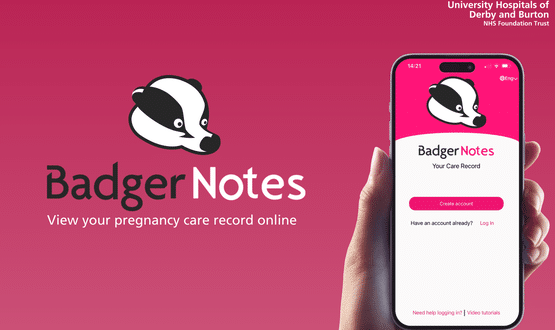Secure defence
- 23 January 2013

The idea of developing an electronic health record for a discrete population of 300,000 adults might sound straightforward enough. But when the population is servicemen and women the scenario becomes more complex.
It only takes a moment to grasp just how complex. Servicemen and women can serve at any one of numerous sites, some fixed, some temporary, some on the ocean, some even under it; and the up to date record has to be available at every site.
It has to be secure; this, after all, is the health record of every serving person in the country’s armed forces.
Now, after six years’ hard work the record exists: and in October, the development team from Logica (now part of CGI) not only won the ‘excellence in major healthcare IT development’ category of the EHI Awards 2012 in association with BT, but emerged as the overall winner.
Working below water
Logica’s Defence Medical Information Capability Programme system delivers three things: a centralised health record for each patient, information for medical and operational decision makers, and (shortly) an interface with NHS services that delivery secondary healthcare for servicemen and women.
Strictly speaking, Logica has developed two health records. One is the primary and dental care record, based on the EMIS PCS primary care system, but enhanced to operate at enterprise scale.
The other is a secondary care record, based on System C’s Medway package and delivered through the Whole Hospital Information System (WHIS) that includes both a patient administration and a business intelligence capability. An interface between the two has been commissioned but is not yet active.
The records DMICP holds are accessible securely from any one of more than 500 sites. This includes 250 fixed sites from which the armed services operate around the world, as well as ten permanent overseas bases, 55 ships and submarines, and the various active land deployments such as Afghanistan.
Nick Wilson, director of government, space and defence outsourcing at CGI, says: “When we started the DMS had 250 stand-alone EMIS LV systems.
“These were point solutions and it was not possible to share or transfer a record. So people had multiple records and there was no overall view of what was going on. There was no automated way of finding out, for example, how many people were off sick or how many had been vaccinated.”
The development took place against a backdrop of increasing complexity. “This has been a time of increasing tempo in operations, and a time when there was an increased need to understand how many military personnel are fit for operations, not just in regular services but in the reserves too,” says Wilson.
“People are moving much more regularly from base to base and from active operations back to base and we are seeing an increasing amount of operations involving all three services – Royal Air Force, Army and Royal Navy.”
Finding the bandwidth
DMICP went live in 2006. It has a patient population of 250,000 personnel and 50,000 civilians, more than 7,000 users, holds 400,000 records, and has recorded 25m consultations to date.
In the process, it has delivered all the benefits that might be expected of a joined up clinical record and data warehouse.
“There are significant benefits to clinicians of a single medical record,” says David Johnson, technical lead for the programme. “They now have a complete record, even on board a submarine.”
CGI hosts the DMICP at secure data centres and designed it to be resilient over secure networks with low bandwidths. But on board a submarine or in a tent in remote part of Afghanistan, not even low bandwidth is available.
Johnson explains how CGI overcame this. “We have developed synchronization software,” he says.
When the submarine or ship docks, the system is loaded with the demographic details of those on board and synchronises their health records from DMICP onto a portable version. This can be done using over a variety of data links including satellite.
Any changes made to the portable DMICP during the deployment can be synchronised back to the central, hosted system at the next dock.
WHIS, meanwhile, is deployed at Camp Bastion in Afghanistan, which hosts a field hospital providing for British and Coalition forces, local police and civilians.
Its role is to stabilise patients and transfer them onwards. Integration with DMICP will allow a summary of deployed hospital care to be recorded in the health record.
Secrets of success
This has not been a quick or a simple project – but according both to CGI and the Ministry of Defence it has been a success.
Richard Chapman, formerly MoD programme director, says: “Logica (now part of CGI) demonstrated a real understanding of the business and technical challenges of this programme.
“Logica is flexible, agile and innovative; they have delivered and adapted the service to reflect the rapid pace of change. As a result, DMICP has delivered more for less and sets the standard in military primary healthcare.”
Wilson ascribes this to a range of factors. For a start, the complexity and scope of the project played to CGI’s strengths and experience, for example in satellite communications, complex system integration and data security.
Just as important has been collaboration, says Wilson. “We have had very good and close working relationships with everyone involved.”
That includes clinicians within DMS, the Ministry of Defence and within partners EMIS and System C (now McKesson).
Developing EMIS PCS to provide enterprise-wide capability was, he says, both key to the success and one of the most challenging aspects.
“It has required a lot of innovation to make it work from the technical side and that required close working with EMIS and with system designers,” adds Johnson.
A well-planned roll out with good training and change management was another crucial factor, says Wilson. “You can deliver a perfect IT system but if users do not know how to use it, it will not work.”
As with any system, DMICP is being improved as needs change and new functionality is demanded. Work is already underway to incorporate Choose and Book into the system and future releases will address electronic transfer of prescriptions and summary care record functionality.
Well deserved recognition
Winning the award means a huge amount to the team, agree Wilson and Johnson. “It’s great to have our work in health recognised,” says Johnson.
“So many people have worked so hard and for so many years on this – I have been working on it for eight years and I am not alone. We have all put our hearts and souls into this to make it work well.”

The EHI Awards 2013 are now open for entries. For full details of this year’s categories, judging process and how to submit your entry please visit the dedicated awards website.
This year’s black tie awards dinner will be held at the prestigious Roundhouse in north London on 10 October. For information about sponsorship opportunities contact head of events Neil Hadland. Tickets will also be on sale soon.




